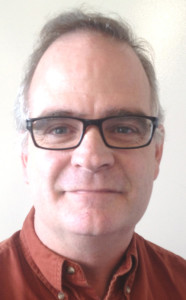I’ve mentioned before that I drive for one of the car sharing services. Depending on when I drive, I sometimes have considerable time between passengers, and I often pass the time by listening to music.
I have lately been listening to the Miles Davis album “Kind of Blue,” recorded in March and April of 1959 and released in August of that year to near universal acclaim. It went on to be the best-selling album in the history of jazz and is generally considered to be one of the greatest albums ever made as well as Davis’ masterpiece. It was hugely influential at the time and has been since.
The musicians that Davis assembled for this recording amounted to a “supergroup” of jazzmen. Bill Evans played piano (with Wynton Kelly sitting in on one track), John Coltrane played tenor saxophone, Julian “Cannonball” Adderley played alto sax, with Paul Chambers on bass and Jimmy Cobb on drums.
Miles Davis had begun exploring “Modal Jazz” on his previous album “Milestones” – particularly on that album’s title track – but “Kind of Blue” is where he fully committed to this new approach. Modal jazz is jazz that uses musical modes (e.g., dorian, Lydian, etc.) rather than chord progressions as its harmonic structure.
He set out to make a revolutionary album, and the result lived up to his aspirations. John Coltrane spent the rest of his life expanding and elaborating on the modal concepts pioneered on this album, and other jazz musicians seized and spread the new approach. The barest sampling: Pianists Chick Corea and Herbie Hancock (who would late join Miles in his legendary mid-’60s quintet) ; Sax player Wayne Shorter (you can hear “Kind of Blue’s” influence on some of Shorter’s subsequent compositions for Art Blakey’s band in the early ’60s); tenor saxophonist Joe Henderson and many others.
One of the album’s pleasures for me is listening to the two saxophonists, Coltrane and Adderly, have what amounts to a musical conversation throughout the albums’ six songs.
Coltrane could be a very cerebral player, but there was always a quality of spiritual seeking in his playing. Coltrane once said, “I think the majority of musicians are interested in truth, you know — they’ve got to be because a musical thing is a truth. If you play and make a statement, a musical statement, and it’s a valid statement, that’s a truth right there in itself, you know. If you play something phony you know that’s phony. All musicians are striving to get as near perfection as they can get. That’s truth there, you know. So in order to play those kind of things, to play truth, you’ve got to live with as much truth as you possibly can.”
His solos on the album, particularly on the first track, “So What,” and on “Freddie Freeloader,” are restless truth-seeking and reaching for transcendence by ‘Trane, to the point that this listener feels almost as if he’s eavesdropping on a private prayer.
Cannonball, on the other hand, is far more earthy and grounded. Where Coltrane is reaching for transcendence, Cannonball is all gritty, bluesy swing, sometimes sounding almost as if he’s trying to bring ‘Trane back to earth.
On the CD edition I own, the sixth track is an alternate take of “Flamenco Sketches,” and it is one of the most beautiful and poignant performances in the history of jazz – quiet and lyrical, without being cloying.
If you are not familiar with jazz, or don’t consider yourself a fan, I urge you to listen to this record. If you feel little or nothing, then jazz probably isn’t your thing.
On the other hand, if you find yourself suddenly grinning uncontrollably and feeling something like wonder, go look up Davis’ subsequent work with his quintet, and also John Coltrane’s albums he made with his quartet up through his own masterpiece, the great “A Love Supreme” from 1964.
Jazz has always evolved and changed at breakneck speed – the very foundation of the music is improvisation and innovation, after all. A friend once remarked that jazz went, in about 70 years (from, say, Louis Armstrong to Ornette Coleman), through about three centuries of evolution. I have listened to and appreciated my of the sub-genres of the music, but the period from about 1955 to 1965 will always be my favorite era in jazz. This was the era not only of the previously-mentioned albums, but of Art Blakey’s “Jazz Messengers,” Ornette Coleman’s “Free Jazz,” and the West Coast cool jazz of people like Dave Brubeck and Paul Desmond, Stan Getz, Chet Baker, Gerry Mulligan and many others. It was in some sense a culmination of the art.
On a completely unrelated note, it looks like we are in for a major storm – the likes of which we haven’t seen in years – this weekend, and maybe beyond. Let’s be safe out there.
Matt Talbot is a writer and poet, as well as an old Benicia hand.







Leave a Reply